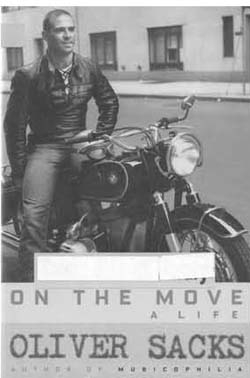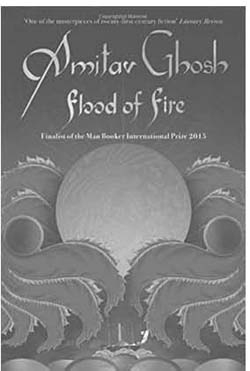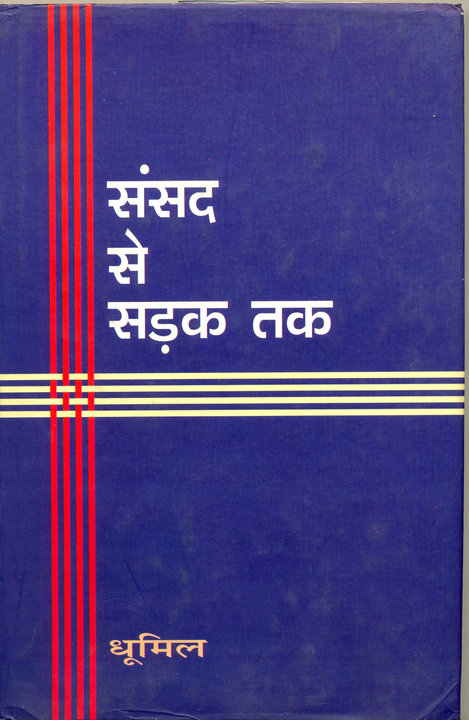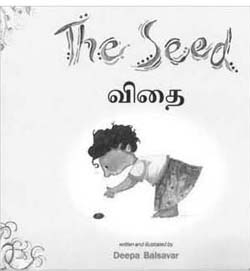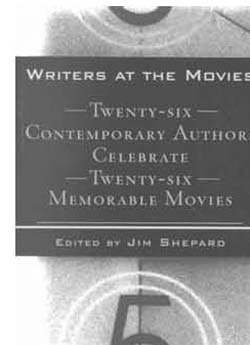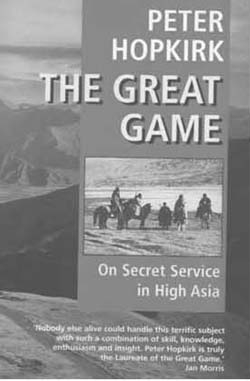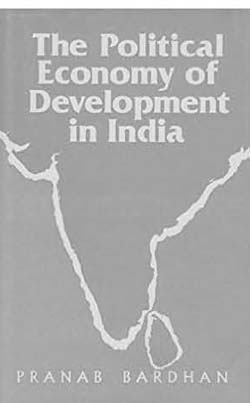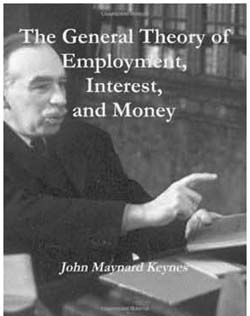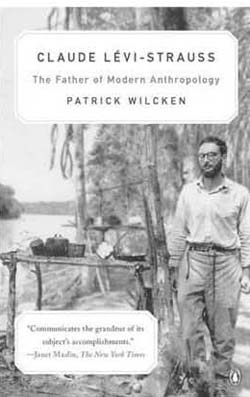The author has to be admired not only for the formidable amount of painstaking research she has done for this book, grounded as it is on facts, but for her ability to marshal her research into a story that covers World War I and the entry of the United States into World War II, with the attack on Pearl Harbor. The story has been woven, obviously with care, around the First World War almost entirely and its aftermath in the US.
Archives
January 2016 . VOLUME 40, NUMBER 1This is one of the most misleading titles I have ever come across. The book is neither brief, nor is it the story of seven killings with its suggestion of serial murders. Very briefly, at the most superficial level, it narrates the story of Bob Marley, the Jamaican reggae singer, the target of an assassination attempt in the 1970s.Bob Marley is referred to as the ’Singer’ in the book and the assassination attempt on his life is touched upon constantly. But for what purpose? Not clear in the story which is confusing, chaotic and kaleidoscopic.
2015
Oliver Sacks, who is the author of a dozen books on the neurological mysteries stemming from impairments of the brain resulting in odd, un-understood behaviours, is known by the lay public primarily through the movie, Awakenings, based on his work with patients who were survivors of encephalitis lethargica. The so-called ‘sleeping sickness’ had killed many thousands in the 1920s and those who survived but had not recovered, were housed in a hospital where Dr Sacks started working in 1966.
Reading one Rushdie novel is like reading another. Good fun. You try to see if you can read it in one sitting because you are not too sure even a book mark would convince you where you left off or whether it was even the same book you were reading. Each book now is a blur and is smokey around the edges and seems to be incestuous and promiscuous, melting weak kneed and sometimes penetrating viciously into other books of his (and his own life) and that of others and also all popular cultural texts that have come anywhere near him.
2015
In an interview in 2012, Amitav Ghosh had described his art thus, distinguishing his writing from that of the historian: ‘History is like a river, and the historian is writing about the ways the river flows and the currents and crosscurrents in the river. But, within this river, there are also fish, and the fish can swim in many different directions. So, I am looking at it from the fish’s point of view and which direction the fish swims in. So, history is the water in which it swims, and it is important for me to know the flow of the water. But in the end I am interested in the fish.’
Monsieur fascinates, is full of many interesting possibilities, yet does not quite succeed. Durrell, sadly, does not develop more fully the many curious, inter-linked themes that he interjects along the tortuous way of this novel within a novel. In fact, one often gets the feeling that Durrell himself—-like most of his characters—was never quite sure what shape this novel would take and literally improvised as he went along.
It is not a ‘scholarly’ book. It is not a ‘profound’ book. But it is a book which makes you want to meet the writer and talk to him. It has a pleasant, straight-from-the-shoulder manner, and the rat-tat-tat of the sentences, without nagging you, holds your interest. What is more, the down-to-earth locales which are the several contexts to the problems discussed, along with the accompanying individual names (fanciful coinages, I am sure), invests every little essay with pragmatic value.
1975
It is the usual impression that oriental knowledge essentially consists of speculation concerning the ultimate nature of things beyond what is available by pure observation. The elucidations of these problems are entirely philosophical in nature and concern the Supreme Brahman as the ultimate goal for the purpose of knowing what we are. At least, this is what an ordinary student, whether he be trained in Indian philosophy or not, is led to believe.
1975
Watership Down is an incredible book. It is the story of an epic journey of a small band of wild rabbits. Fiver, the prophet, predicts imminent destruction and, under the leadership of his brother Hazel, the rabbits leave the familiar security of their warren and brave the unknown countryside in search of a new home. Unconsciously, the reader slides into a completely new dimension, joins Hazel and his friends, sees the world through their eyes, smells the dangers, suffers the hardships and terrors till they reach the perfect home— Watership Down.
1975
Once again in her latest novel, as in most of her earlier work, Ruth Prawer Jhabvala explores the situation of foreigners in India and what India does to them. But unlike her earlier work (seven novels and three collections of short stories), here for the first time she adds an extra dimension of time, going back to the past for the confirmation of a pattern that she had so far traced only in terms of contemporary India.
Bertrand Russell was born in 1872 and died in 1970 at the ripe old age of ninety-seven. Mathematician, philosopher, pacifist during World War I, advocate of war on Russia soon after World War II, campaigner for nuclear disarmament towards the end of his life, and prolific writer on a variety of topics, Russell was a prominent figure among the intellectual elite of England for well over three quarters of a century. An intimate and detailed account of Russell’s multifaceted personality and his achievements is now available in the book by Ronald Clark, biographer of Einstein, J.B.S.Haldane, the Huxleys and Tizard.
The survey induces sadness at what appears to be a near total lack of (a) research into the more fundamental issues of public administration, (b) depth and penetration in such studies as have been made or come to notice. The presentations are competent but do not appear to have escaped the temptation to highlight the fashion to berate the bureaucracy for its alleged ‘dysfunctional’ nature.
Technological progress has taken very diverse forms in different environmental conditions and periods of history, so diverse that it has sometimes not even been recognized as such when viewed through unfamiliar eyes. ‘No Chinese peasant’, commented Victor Hugo, ‘goes to the city without carrying back, at the end of his bamboo, two buckets of what we call filth.’ Europeans naturally found it an abhorrent practice.
Come, screaming with all your fourteen mouths, You speechless hysteria hurting in each limb of my nation, Come to me in the loneliness of your rage Come out foaming You the ‘Satvik’ blood of the centuries, I, a small poet Stand hankering for your language, Include me in your speech.With the untimely death of Dhoomil in February 1975, modern Hindi literature lost one of its most promising young poets. … .Dhoomil had managed to attract attention with his clear and refreshingly new imagery and his adroit use of the Hindi language as it is spoken on the streets.
Many of us have on occasion been dubious about the obsession in some circles to explain Indian culture entirely in terms of mysticism. This analysis by Staal of how to approach the study of mysticism is most valuable in that it not only puts the matter into a new perspective, but also because it suggests…
In 1963 Maulana Bhashani met Mao in Peking and Mao spoke to him about Pakistan, USA, USSR, and China. China’s relationship with Pakistan was extremely fragile at the time, Mao said to Bhashani, and the United States, Russia and India would do their utmost to break this relationship. Mao said: ‘You are our friend and if at the present moment you continue your struggle against the Ayub Government, it will only strengthen the hand of Russia, America and India.
The two authors of this book have over the years developed a type of book-making for themselves. The idea is to pick up some subject of recent history which is full of incident and drama, visit the site, read up as much as you can, interview such of the participants as are still around and then write a blow-by-blow, minute-byminute account.
Biography, according to Lytton Strachey, is ‘the most delicate and humane of all the branches of the art of writing’. It is also a difficult art particularly when the story told is that of Jawaharlal Nehru, a man who strode the world like ‘a gentle colossus’ until very recently, and whose life was an open one, openly lived almost in ‘the glorious privacy of light’.
Looking Back The past, it is said, is a strange land, but it is also one in which serendipity has a role. Looking back at our first four (then quarterly) issues, we found to our delight that all our founders had contributed. In this section, ‘TBR@40: Looking Back’, we carry excerpts of reviews from these issues; the only exception is the review of Mohandas Karamchand Gandhi’s Hind Swaraj, which was the first review of the Millennium issue.
2006
I loved Deepa Balsavar’s The Seed the sec- ond I saw it. This little book about a girl who finds a seed and plants it, is so full of warmth and colour that it is impossible not to go back to it again and again. The words are simple—the sentences no more than three or four words long. Its protagonist, a small girl who looks about four years old, appears in a skirt and top with a curly mop of hair. She is immediately relatable and full of animation, buzzing through the pages with energy.
‘I went from one platform to another looking for my picture before I came across these three men calmly sitting and reading their newspapers’ commented Raghu Rai in his explanation to an amazing image that juxta poses frenetic motion with an absolute indifference to the chaos around. Motion is represented by a flurry of blurred figures while the readers are clearly in view, the sharp image picking up the furrowed brow of the perhaps myopic man who holds his paper at a distance. It is Churchgate Station, Mumbai in the nineties and Rai waits for his moment to record a calm focus amidst the ‘human deluge’.
Indian classical dance is rather a favourite subject of coffee table books for obvious reasons. The visual appeal and allure of the images lend itself to glossy books on the theme, of which there are many. Hastily put together primers also abound in the market. Of late, serious academic scholarship has had much to offer on the subject. Davesh Soneji, Avanti Meduri, Priya Srinivasan, and many others have contributed a great deal through their academic writing in the form of books and scholarly papers.
TBR completes four decades of publication. Which were the most significant books on Hindustani classical music published in these years? Four titles immediately come to mind, one symbolically for each decade. Right on top is Sheila Dhar’s brilliantly funny memoir Here’s Someone I’d Like You to Meet (1995) now available in the omnibus edition Raga ’N Josh (Permanent Black, 2005, 2015). The book is an anecdotal classic about the earthy world of Hindustani vocalists, a perennial favourite among music lovers.
Ever since the movies were invented, people have been writing about them. There was WG Faulkner, who, in 1912, became the first regular critic in a British newspaper (The London Evening News). ‘The picture theatre has taken a firm place in the social enjoyment of the people,’ he declared. ‘It is no longer a matter of wonder; it has become an everyday part of the national life.’ Americans like Otis Ferguson and James Agee followed.
I must, of course, begin by congratulating The Book Review on her 40th birthday. For survival and growth with integrity, and for what it is doing to encourage discussion and debate, without which, as Romila Thapar and TBR have recently reminded us, we cannot have democracy. There are increasing signs that this is indeed the case. I was scared when I gave a talk on socalled Love Jihad recently. After Professor Kalburgi’s assassination, my mother called me to say I should install a spy-hole in my door, if I didn’t have one. Do not open the door to strangers, she said.
In T.H. White’s The Once and Future King, Merlyn asks his owl Archimedes, ‘What is your favourite bird?’ ‘Archimedes thought this over for some time, and then said, “Well, it is a large question. It is rather like asking you what is your favourite book.”’I’ve been reading for six-and-a-half decades. Learnt reading at mum’s knee through a wonderful Lucy Mabel Atwell book. Obviously one cannot talk about all the books one has read.
2014
Wandering idly through my mind’s library, pausing at books that I had read long ago, at those I remembered vividly and others that had receded from immediate recall, I realized that somehow, I had always been drawn to non-fiction. Essays, letters and diaries, memoirs, travel writing of the interior-monologue-George Schaller variety, biographies.
1979
In the last forty years Bangalore has exploded from a sleepy ‘air-conditioned garden city’ into one of the most chaotic megalopolises of India, its economy dominated by business corporates like Infosys, Wipro and Biocon, and a host of others which have come up in their shadow. There was a time when it was a city whose hotels filled up only during the horse racing season and emptied immediately thereafter, whose finances were controlled by two distillaries, and whose intellectual reputation was sustained by half a dozen research establishments protected from the hurly-burly of the outside world by hefty government funding and sprawling green lawns.
It is now twenty-five years since Peter Hopkirk’s book was published, the great game between Imperial Russia and Great Britain in Central Asia that he celebrated is forgotten, as dated as marbles in an age of video games, but it remains worth reading, not just because it is beautifully written, but because it still raises questions, sets off trains of thought, and goads the reader to explore the issues he writes about. Few books do this, and those that do age well.
The title of this short essay invokes the title of a landmark volume, published in 1985, Bringing the State Back In, edited by Peter Evans, Dietrich Rueschemeyer and Theda Skocpol. It expresses the theme that unites a clutch of books, all of which were published in the mid-1980s and had an enduring impact on scholarship in a field of Indian politics. In different ways, these accounts of the political economy of development and redistribution underscored the centrality of the state.
Usually, when the editors of this jour nal ask me to write something, I decline. But this time I had to accept because they asked me to write something about the most influential writer in economics in the 20th century. It was—as the Americans say—a no-brainer because there is only man who fits the bill: John Maynard Keynes, who stands out by a mile. To me, he was as much an economist as a very deft political thinker.
Homosexuality, lived out freely and fearlessly, places before the individual and society a real set of imperatives, challenges and opportunities: to put reason and humanity before fear, habit and prejudice; to test our unexamined assumptions regarding some of the basic elements of human life—the family, marriage, parenthood, independence, loneliness, companionship, fidelity, promiscuity .
When Gerda Lerner’s Creation of Patriarchy appeared, nearly 30 years ago, in a pre-globalized era, middle class, mainly upper caste feminists teaching in colleges in Delhi (and elsewhere) read it avidly, begging, borrowing (but hopefully not doing more than that), and discussing it in the small, intense study circles that dotted the cityscape.
It was a perplexing moment when the editors of TBR asked me to comment on a book on religion that had been important in its time and continued to be so in our own. This request, I have to admit, made me more acutely aware of the distinction that ought to be made between a book on religion and about it. At least in the context of Hinduism (however debatable that term might be), a book on religion or more generally, a text motivated essentially by a religious inspiration or consciousness does not appear to have been produced in a long time.
During the 1980s, at the Department of Sociology, Delhi School of Economics, structuralism was the grand theory with which we were expected to learn about the intricacies of kinship, the contradictions of myths, and the underlying meanings of all cultural transactions. Structuralism was represented, by leading faculty members, as the theory of culture and the theory of social and cultural change. But, pouring for months over Elementary Structures of Kinship and later over The Raw and the Cooked had left me disenchanted.
Reading books on cities has taught me that town-planners may intervene in landscapes, but that for all the pretentious build-up of deference to ecology and environment, the original great Planner’s wisdom is being increasingly disregarded. Landscapes of rock shaped over centuries are being destroyed, and rivers being channelled by short-sighted modern ‘planners’(as Ravish Kumar gently but forcefully reminded us on NDTV when reflecting on the Chennai floods).
When Natalie Zemon Davis wrote The Return of Martin Guerre (1983), a book just over 150 pages, it became influential in professional history circles because, its brevity notwithstanding, it cut the barbed-wire fence which separates history from storytelling. Davis’s book is unusual in being wonderful as both story and history.
1987
For several years I taught a history course on ‘Social Formations and Cul- tural Patterns of the Ancient and Medieval World’ at Hans Raj College, University of Delhi. This was a B.A. Honours ‘survey’ course (which is still part of the syllabus, although in a modified form), intended to give to students a general understanding of the early and premodern history of humankind—including themes such as evolution, transition to food production, the Sumerian civilization, ancient Egypt, Graeco-Roman antiquity, and emergence of feudalism in early medieval Europe.



